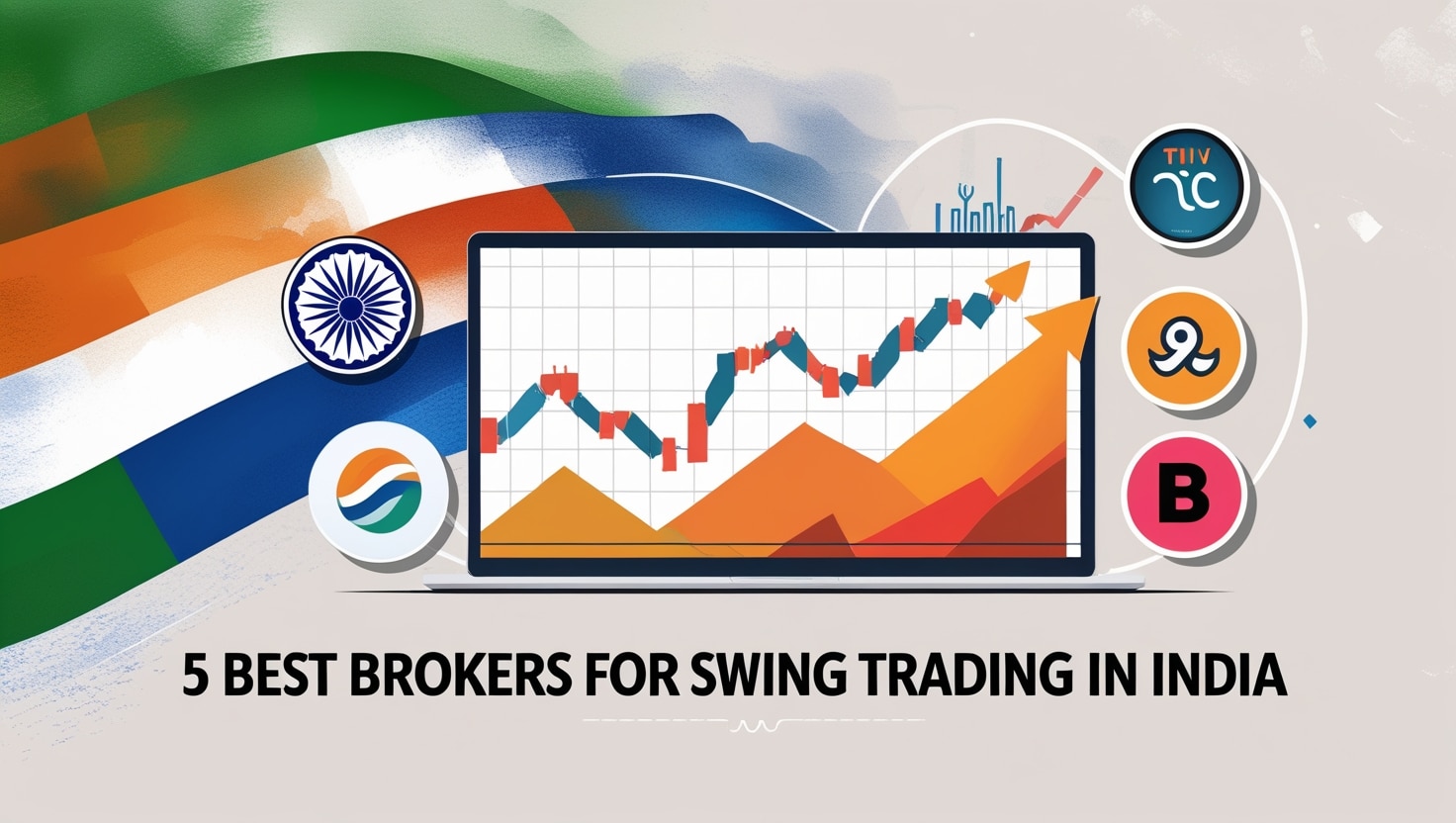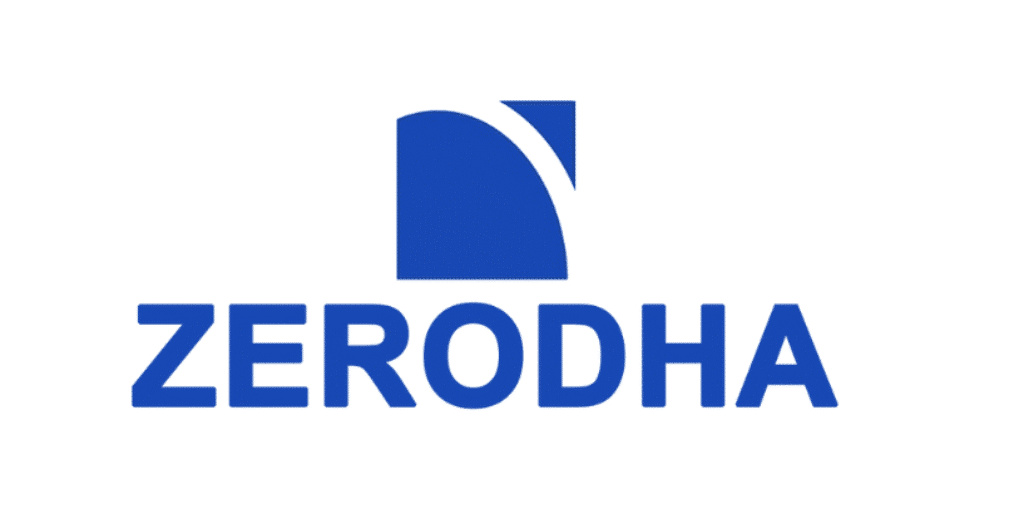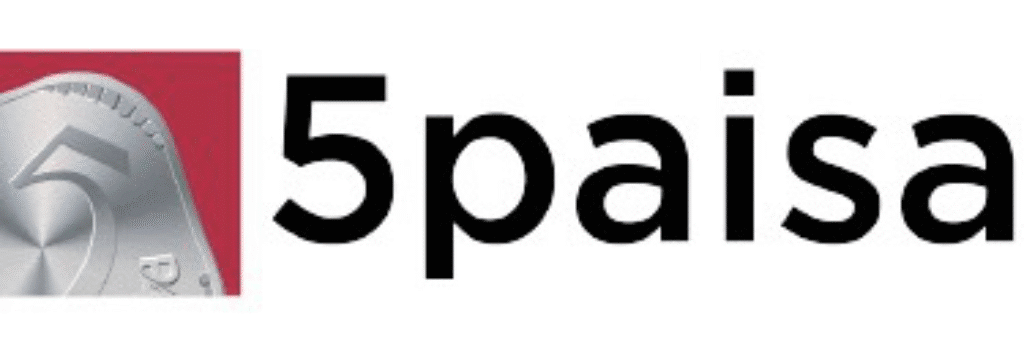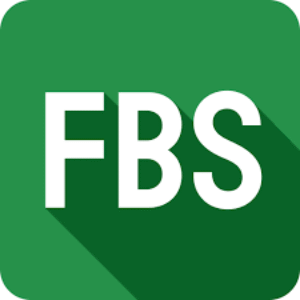
Swing trading – meaning a style of trading where positions are held for a few days to a few weeks – is popular among Indian stock market traders. But what is swing trading exactly? In simple terms, swing trading involves buying and selling stocks to capture short-to-medium term price moves rather than quick intraday fluctuations. A swing trade typically lasts longer than a single session, aiming to profit from “swings” in stock prices over several days or weeks. This approach sits between day trading and long-term investing: traders try to ride intermediate trends using technical analysis while avoiding the need to monitor markets every minute. It’s a strategy that requires planning, the right tools (like charting and screeners to find the best swing trading stocks), and a reliable broker. Selecting a good broker is crucial, since low fees, quality platforms, and research support can all impact your swing trading success.
In this comprehensive guide, we’ll first explore some effective swing trading strategies and how to use swing trading screeners. Then we’ll review 5 of the best SEBI-registered brokers in India for swing trading, comparing their pros, cons, features, fees, and platform experience (mobile vs desktop). Whether you’re a beginner looking for an easy interface or an advanced trader needing cutting-edge tools, you’ll find a broker that fits your needs. Let’s dive in!
Overview of 5 Best Brokers for Swing Trading in India
| Broker | Brokerage Fees | Key Platforms | Special Features | Pros & Cons |
|---|---|---|---|---|
| Zerodha |
₹0 Delivery ₹20 Intraday/F&O |
Kite Web Mobile App TradingView Charts |
• 100+ indicators • GTT orders • Zerodha Varsity education • API access (Kite Connect) |
✓ Ultra-low fees, user-friendly, excellent education
✗ No advisory, limited phone support
|
| Upstox |
₹0 Delivery ₹20 Intraday/F&O |
Upstox Pro Web Mobile App TradingView Integration |
• Fast execution • Multiple chart layouts • Price alerts • Digital KYC |
✓ Modern UI, fast platform, good mobile app
✗ No advisory, limited advanced scanners
|
| Angel One |
₹0 Delivery ₹20 Intraday/F&O |
Super App Web Platform Angel SpeedPro |
• ARQ Prime algorithm • Research reports • 16,000+ branches • Stock screeners |
✓ Research + low fees, local support, ARQ Prime
✗ Complex interface, overwhelming features
|
| ICICI Direct |
₹0 Delivery (Neo) ₹20 Intraday/F&O |
Web Platform Markets App Trade Racer |
• 3-in-1 account • Bank integration • Research hub • SMS/email alerts |
✓ Bank trust, research, 3-in-1 convenience
✗ Complex interface, higher AMC (₹700/yr)
|
| 5paisa |
₹20 All segments ₹10 with plans |
Mobile App Trader Terminal Web Interface |
• Swing Trader service • MarketSmith partnership • Multi-asset platform • Curated trade ideas |
✓ Lowest cost, swing trade ideas, multi-asset
✗ Newer platform, smaller community
|
Key Takeaway: All brokers offer competitive flat-fee pricing (₹0-20 per trade). Choose Zerodha for simplicity, Upstox for tech features, Angel One for research, ICICI Direct for banking integration, or 5paisa for the lowest costs with swing trading recommendations.
Swing Trading Strategies
Swing trading is all about strategy. Unlike random stock picking, successful swing traders follow defined trading strategies to decide when to enter and exit positions. There’s no single “best swing trading strategy” that works for everyone – the optimal approach depends on your comfort and market conditions – but there are a few popular methods used widely:
- Trend-Following Strategy: Many swing traders try to catch trends. For example, a common technique is the moving average crossover strategy, where a shorter-term moving average crossing above a longer-term one signals an uptrend entry (and vice versa for exits). This helps traders ride momentum in a stock’s price direction and is often considered one of the best swing trading meaning strategies for beginners due to its simplicity.
- Breakout and Support/Resistance Trading: Another approach is trading breakouts and reversals. Traders identify key support and resistance levels on a chart – the price floor and ceiling for a stock. Buying when a stock bounces off support (or breaks out above resistance) can yield profits from the subsequent swing. Similarly, some traders use chart patterns (like channels or triangles) to anticipate breakouts and swing opportunities.
- Indicator-Based Strategy: Swing traders often leverage technical indicators for timing. Tools like the Relative Strength Index (RSI) or Moving Average Convergence Divergence (MACD) can signal when a stock is overbought or oversold, hinting at a coming swing reversal. For example, an RSI dropping below 30 might indicate a stock ripe for an upward swing (a potential buy), whereas an MACD bullish crossover can confirm upward momentum.
- Fibonacci Retracement: Some advanced traders use Fibonacci retracement levels to plan swing trades. After a sharp price move, stocks often retrace a portion of that move (say 38.2% or 61.8% levels) before continuing the trend. Swing traders watch these levels to buy on dips during an uptrend or sell on bounces during a downtrend.
No matter the strategy, risk management is key. As legendary investor Rakesh Jhunjhunwala famously advised, “Respect the market. Have an open mind. Know what to stake. Know when to take a loss. Be responsible.” — Rakesh Jhunjhunwala. In other words, successful swing trading isn’t only about finding the best swing trading stocks or timing the perfect entry – it’s also about controlling emotions, cutting losses when a trade goes wrong, and sticking to your plan. A good strategy combined with discipline will greatly improve your odds of profit in swing trading.
Swing Trading Screeners
Finding the right stocks to swing trade is half the battle. This is where swing trading screeners come in. A screener is essentially a tool (or software) that filters stocks based on criteria you set – for example, “show me all stocks that gained 5%+ on high volume today” or “stocks with RSI below 30 and market cap above ₹5,000 crore.” By using screeners, swing traders can quickly narrow down hundreds of stocks to a manageable watchlist that fits their strategy.
Swing traders often use screeners to identify candidates for the next trading week. In fact, many will run scans over the weekend to spot “swing trading stocks for next week” – looking for setups like breakout patterns, trending sectors, or momentum plays. For instance, you might screen for stocks that closed above their 50-day moving average or those in consolidation poised for a breakout. If you’re seeking the best swing trading stocks, a screener helps surface opportunities you might otherwise miss.
How to access swing trading screeners? In India, there are several ways:
- Brokerage Platforms: Many top brokers include built-in scanners in their trading platforms. For example, some brokers have technical scanners that alert you to price and volume spikes, new 52-week highs/lows, etc. If your broker offers a stock screener or pre-built watchlists (e.g. “Top Gainers/Losers”), make use of these tools to find swing trade setups.
- Dedicated Scanner Websites: Standalone tools like Chartink (for technical criteria) or Screener.in (for fundamental + basic technical filters) are popular among Indian traders. Chartink, in particular, is a go-to free screener for technical swing trading – you can filter NSE stocks by technical patterns, candlestick signals, volume surges and more, and many traders use it daily to generate trade ideas.
- Broker Research & Advisory: Some full-service brokers publish periodic reports or alerts with stock picks. For example, 5paisa (a discount broker) offers a premium feature called “Swing Trader” which provides short-term stock recommendations to clients. This service, in partnership with William O’Neil’s MarketSmith India, combines technical and fundamental analysis to highlight stocks with a 5–10% target in a 2–20 day timeframe. Such curated lists essentially act as screeners by telling you which stocks to watch for upcoming swings (often these might be seen as the best swing trading stocks for next week as identified by experts).
The key is to use a swing trading screener to complement your strategy. Rather than randomly guessing stocks, you set objective filters so that, for example, only high-volume breakout candidates or strong trending stocks show up on your radar. This saves time and increases the probability of finding a winning swing trade. As you gain experience, you can even customize screeners to match your specific strategy (for instance, filtering by your preferred technical indicator or chart pattern). With the right screener, you’ll consistently have a watchlist of quality trade setups ready to go.
5 Best Brokers for Swing Trading in India
Now, let’s look at the top 5 brokers in India that are well-suited for swing trading. All of these brokers are SEBI-registered and have a strong reputation. We’ll compare their features, fees, trading platforms, and what makes them good for swing traders – including both beginner-friendly aspects and advanced tools.
(Note: All the brokers below offer flat-fee brokerage plans, which is great for swing traders since you won’t pay hefty percentage commissions on each trade. Equity delivery trades are typically free or very low-cost, and intraday or F&O trades are around ₹20 or less per order.)
1. Zerodha
Zerodha is India’s largest stock broker and a favorite among swing traders for its simplicity and low costs. Established in 2010, Zerodha pioneered the discount brokerage model in India and now boasts over 65 lakh (6.5 million) active clients – the highest in the country. It’s often considered the best overall broker for retail traders due to its transparent pricing and excellent trading platform.

- Pros: Ultra-low fees (₹0 brokerage on equity delivery trades, and just ₹20 or 0.03% per order for intraday and F&O, whichever is lower). Zerodha’s flagship platform Kite is highly user-friendly and stable, with an intuitive interface suited for beginners as well as advanced charting (offering 100+ indicators and TradingView charts) for technical traders. The broker provides extensive educational resources through Zerodha Varsity and a large community forum, which is great for learning swing trading strategies. It also offers API access (Kite Connect) for tech-savvy traders who want to build custom tools.
- Cons: Zerodha operates on a purely online model with no personalized stock advice or relationship managers – so unlike a full-service broker, you won’t get hand-holding or advisory calls. Customer support is primarily via tickets/email; while generally good, some users desire faster phone support during urgent issues. Also, Zerodha doesn’t have a dedicated downloadable desktop terminal – traders use the web platform or mobile app (though these are more than sufficient for most needs).
- Platforms & Tools: Kite Web and Mobile App are slick, modern, and sync seamlessly. The mobile app is lightweight and well-designed, letting you execute swing trades on the go with real-time data. Chartists appreciate features like historical data, advanced order types (GTT – Good Till Triggered orders) and integrated market screeners on Kite. Zerodha’s ecosystem includes Coin (for mutual funds) and Streak (for strategy automation and backtesting), which can be useful if your swing trading extends to those areas.
- Fees: Account opening is either free or very nominal (around ₹200). Equity delivery trades have zero brokerage, which means you can buy-and-hold stocks for swings of several days without any fee on exit – a huge plus. Intraday and F&O trades are charged at a flat ₹20 or 0.03% (whichever is lower) per executed order, ensuring even higher-value trades never cost more than ₹20. There are no hidden charges; just statutory charges (STT, exchange fees) and a ₹300/year demat maintenance fee. Overall, Zerodha’s cost structure is among the lowest and most transparent, benefiting frequent traders.
Why Zerodha is good for swing trading: Its combination of minimal fees, an easy yet powerful platform, and abundance of learning material makes it ideal for swing traders. Beginners appreciate the clean interface and tutorials, while seasoned traders value the fast trade execution and charting. Zerodha strikes a balance between beginner-friendly usability and advanced capabilities, which is why it’s often the top recommendation for anyone starting out in swing trading.
2. Upstox
Upstox is another leading discount broker in India, backed by reputable investors. Founded in 2011, Upstox has grown rapidly with over 3.8 million active clients and is known for its technologically advanced platform. It offers a solid environment for swing trading, combining low fees with feature-rich tools.

- Pros: Competitive flat brokerage (₹20 per order for trades; free delivery investing) in line with peers. The Upstox Pro trading platform (available on web and mobile) is fast and packed with features – including TradingView-powered charts, dozens of technical indicators, and a customizable workspace. Upstox is praised for its simple account opening (fully digital KYC) and a modern app interface that is easy for newcomers to navigate. It also provides useful extras like price alerts and a watchlist that syncs across devices, handy for monitoring your swing trade targets. According to one comparison, “Upstox is a great broker for experienced traders seeking low-cost trading with advanced tools, and it’s also good for new investors looking for an easy-to-use platform”.
- Cons: Upstox, being relatively new and 100% online, does not offer in-person support or advisory services – so you won’t get stock research reports or personal guidance. Some users have reported occasional server load issues during peak hours in the past (though the platform has improved scalability recently). Additionally, while it has many charting features, extremely advanced traders might find some analytical tools or data (like very sophisticated scanners or integrated options greek charts) lacking compared to high-end professional platforms.
- Platforms & Tools: Upstox Pro Web and Upstox Mobile App both provide a smooth trading experience. You can use multiple chart types, draw trendlines, and even have multiple charts on one screen in the web version – great for tracking several stocks. The mobile app is optimized for speed, allowing quick order placement (important for timing swing trade entries/exits). Upstox also supports advanced order types and provides an API for automation enthusiasts. It may not have a desktop .exe platform, but the web app’s functionality is robust. For finding trades, Upstox offers a basic stock screener and curated lists (like top gainers), though many traders supplement this with external screeners.
- Fees: Similar to Zerodha, Upstox charges a flat ₹20 per trade for intraday, F&O, currency, and commodity trades. Equity delivery trades were made zero brokerage as part of its plans to attract long-term investors. There’s no monthly fee required – just pay per order. Account opening is often free (they run promotions) and the annual demat charge is around ₹300/year. Notably, Upstox often gives new customers offers like zero account opening fee or one month of free brokerage, which can be a bonus if you’re just getting started. Overall, cost won’t be a barrier when doing swing trading with Upstox.
Why Upstox stands out: Upstox has carved a niche as a tech-forward broker. For swing traders, this means you get reliable tools to analyze stocks and execute quickly, without paying high brokerage. It’s an excellent choice if you want a clutter-free interface that still offers advanced charting. Upstox is also constantly updating features (for example, introducing smart APIs, option strategy builders, etc.), which indicates you’ll have access to better tools over time. It’s a strong all-rounder – approachable for beginners and sufficiently equipped for seasoned swing traders.
3. Angel One (Angel Broking)
Angel One (formerly Angel Broking) is a well-established Indian brokerage house that successfully transitioned from a traditional broker to a modern hybrid model. Operating since 1987, Angel One has a large customer base (over 42 lakh active clients as per recent data). It offers the best of both worlds: full-service features like research reports and advisory, coupled with discount-broker pricing. This makes Angel One very appealing for swing traders who want guidance and tools without paying steep commissions.

- Pros: Comprehensive research and advisory services are Angel’s hallmark. Swing traders who value expert opinions will benefit from Angel’s research reports, stock recommendations, and even ARQ Prime – a rule-based investment advisory system. Despite these full-service offerings, Angel charges flat low brokerage (max ₹20 per trade) similar to other discount brokers. The broker has one of the “best platforms (Angel One Super App) and cost-effective trading across segments”. Its trading app and website got a major upgrade in recent years, offering a clean UI, customizable charts, and useful widgets (like heatmaps, market news) which can aid swing trading decisions. Angel One also has a nationwide support network – over 16,000 sub-brokers/branches – so even though you trade online, you can access local support or attend free webinars and workshops they conduct for clients. Beginner traders often find comfort in Angel’s hand-holding and educational initiatives.
- Cons: Because Angel One offers so many features, the app can feel a bit overwhelming at first. It’s not as minimalist as Zerodha’s; there are sections for advisory, third-party integrations, etc., which one might not use initially. Some advanced traders note that while Angel’s tools are good, the depth of customization (for example, in chart indicators or building custom scans) can be slightly limited compared to brokers that focus purely on trading tech. Also, Angel’s legacy as a broker means it still has some remnants of old plans – e.g., if not on the latest plan, a few clients might be on percentage brokerage (though new accounts are all flat fee now). Ensuring you’re on the Angel iTrade Prime plan (flat ₹20) is important.
- Platforms & Tools: Angel One Super App (mobile) and the web platform offer a rich feature set. You get real-time charts with many indicators, a built-in stock screener, and even derivative trading tools. Notably, Angel’s app includes an “Explore” section with curated collections of stocks (like trending stocks, high-volume stocks) which can give swing trading ideas. For those who prefer desktop software, Angel still provides Angel SpeedPro, an installable trading terminal that delivers fast execution and advanced charting (though its interface is slightly dated). Angel’s ARQ Prime algorithm can be a boon – it automatically analyzes stocks and suggests short-term trades or investments, which swing traders can use as idea starters (though you should still do your own due diligence).
- Fees: Angel One now has a simple pricing: ₹0 for equity delivery trades and ₹20 per order for everything else (intraday, F&O, commodities, etc.). There are no subscription charges for the standard plan. Account opening is free, and demat AMC is waived for the first year (₹240/year thereafter). If you utilize call-and-trade, they charge a small fee (around ₹20 per executed order via phone). Importantly, all those research and advisory services (including Swing Trading ideas via their reports) are offered to clients at no extra brokerage – a strong value-add for the price.
Why Angel One is great for swing traders: If you want broker research and guidance along with a powerful trading platform, Angel One fits the bill. It’s especially good for traders who might still be learning – you can get analyst reports on companies, which helps in picking quality swing trade candidates. At the same time, you’re not paying extra for these perks thanks to flat pricing. Angel’s long presence in the market and large client base also bring trust and reliability (many consider it among the best swing trading brokers in India). For someone who wants a bit more than just bare-bones trading – perhaps access to expert advice, stock screeners and educational content – Angel One is a top choice.
4. ICICI Direct
ICICI Direct is the brokerage arm of ICICI Bank, one of India’s leading banks. It is a full-service broker and known for its robust 3-in-1 account feature (seamless integration of trading, demat, and bank account). While historically ICICI Direct was known for higher brokerage, it has modernized with competitive plans (like ICICI Direct Neo) to cater to active traders. For swing traders who prioritize trust, research, and a feature-rich ecosystem, ICICI Direct is worth considering.

- Pros: Strong research and advisory support – ICICI Direct has a large team of analysts providing daily trading calls, thematic reports, and model portfolios. Swing traders can take advantage of these research calls (for example, recommendations on mid-cap swing opportunities or technical picks) as part of their idea generation. The broker’s platforms offer nearly everything: real-time streaming quotes, detailed charts, technical screeners, and a “Swipe to Trade” mobile interface that makes quick entries/exits easy. Because it’s bank-backed, ICICI Direct offers high security, and fund transfers in/out of the trading account are instant and hassle-free (a 3-in-1 account means your surplus cash earns bank interest until used for trading). Additionally, ICICI’s customer service is generally well-regarded; you can get support at branches or via phone which adds reassurance.
- Cons: The main drawback was cost – traditional ICICI Direct plans charged a percentage of trade value (e.g., 0.5% on delivery trades) which becomes expensive for frequent traders. However, with the new flat-fee plans (Neo) this is mitigated; you should opt into the flat ₹20 plan to swing trade affordably. Another consideration: ICICI’s trading interface, while very comprehensive, can feel slightly less modern than pure tech-focused brokers. The web interface has improved significantly, but new users might find the menu system complex due to the sheer range of services offered (equity, derivatives, mutual funds, insurance, loans – all in one portal). Lastly, if you don’t bank with ICICI, opening the 3-in-1 account involves a few extra steps (but it’s still pretty straightforward online).
- Platforms & Tools: ICICI Direct Web has recently been revamped into a more intuitive UI, and ICICI Direct Markets app is the mobile platform focusing on trading features. There’s also Trade Racer, a downloadable trading terminal for PCs, which offers advanced charting, quick execution and is favored by many active traders. In terms of tools, ICICI Direct provides live market scanners, watchlists, and even advanced derivative analytics (like option chains with Greeks). A unique feature for swing traders is access to ICICI’s research hub directly in the platform – you can see technical charts alongside any research call on that stock. This integration of analysis and trading can help in decision-making. They also offer various screeners and customizable alerts (e.g., get an SMS/email if a stock hits a certain price or technical condition), which is useful to manage your swing trades without constant screen time.
- Fees: Under the ICICI Direct Neo plan, equity delivery trades are free and intraday/F&O trades cost ₹20 per order (flat) – very much in line with discount brokers. This plan has made ICICI competitive for traders. Do note that if you use older ICICI pricing, charges can be much higher, so switching to Neo or similar flat pricing is essential. Account opening for trading+demat is often free (with the requirement of an ICICI bank account). The brokerage plan may require a one-time activation, but there’s no monthly charge for Neo. Demat AMC is around ₹700/year (often waived for first year or if you maintain a certain balance). While the AMC is higher than pure brokers, many find it reasonable given the integrated service. Tip: Keep an eye on promotional offers – ICICI Direct sometimes offers discounted brokerage or free access to premium research for new customers, which can add value for swing traders.
Why choose ICICI Direct for swing trading: The biggest reasons are trust, research, and all-in-one convenience. If you prefer having your banking, trading, and investing under one roof, ICICI Direct excels at that. For swing trading, the availability of high-quality research and real-time insights can complement your own analysis (essentially giving you more trading ideas). Also, the ability to quickly move funds between your bank and trading account means you can react to market opportunities faster. With the new flat fee structure, you get these benefits without the old cost concerns. Overall, ICICI Direct is ideal for swing traders who want a reliable, full-featured broker with strong backing – it’s especially popular among those who might trade part-time and value the broader financial services on offer.
5. 5paisa
5paisa is a fast-growing fintech broker and part of the IIFL (India Infoline) group. Launched in 2016, it positions itself as a low-cost, one-stop investment platform. For swing traders, 5paisa offers not just cheap trading but also a suite of tools and products that can enhance your trading decisions. It’s a purely online platform with no frills, designed to compete head-on with players like Zerodha and Upstox in terms of pricing, while leveraging the research pedigree of IIFL.

- Pros: Ultra-low brokerage – 5paisa’s default plan charges a flat ₹20 per order across all segments, and they even have monthly subscription packs that can reduce costs further (for instance, ₹10 per order under certain plans). This makes high-frequency swing trading very cost-effective. The 5paisa trading app is simple to use and integrates multiple offerings (you can trade stocks, buy mutual funds, purchase insurance, etc., all in one app). Swing traders will appreciate the built-in ideas and screeners: 5paisa provides free research advisory including an Intraday trading section, a Smart Investor (for fundamentals) and notably a Swing Trader section for technical picks. In fact, 5paisa has tied up with Marketsmith India (William O’Neil’s methodology) to offer the Swing Trader service, which gives short-term stock recommendations complete with buy ranges, targets, and stop-loss levels. This is a unique feature where you receive curated swing trade ideas – a big plus for those looking for guidance. Additionally, account opening is quick and fully digital, and you don’t need to have any specific bank account to start.
- Cons: Being a newer entrant, 5paisa’s platform had some growing pains. In earlier years, some users reported occasional app glitches or that the user interface wasn’t as polished as Zerodha’s. However, they have improved it continuously. Customer service is mostly online – if you prefer in-person service, 5paisa might not provide that (though being part of IIFL, you can sometimes find assistance at IIFL branches, but it’s not their standard model). Also, while the integration of many financial services is convenient, it might be distracting for pure trading purposes – the app’s dashboard shows loans, insurance etc., which some traders may not need. On the tools front, 5paisa offers good basic charting (with TradingView charts as well), but for very advanced chart analysis or algorithmic trading, it’s not as commonly used as some competitors (they do have an API, but the community using it is smaller).
- Platforms & Tools: 5paisa Mobile App is their primary platform and is quite feature-rich: live charts, watchlists, price alerts, and an interesting feature called Trader Terminal for desktop (browser-based) that provides a more detailed interface for active traders. The Trader Terminal gives you a feel of a desktop platform on the web, including customizable layouts and advanced charts. For swing trade discovery, the 5paisa app’s Ideas section is very handy – under Swing Trader, you can literally see a list of stocks currently in a “buy zone” for swing trading, with suggested profit targets and stop-loss. This can save a lot of time for traders looking for quick setups. There’s also a Portfolio Analyzer tool that can help you track your holdings’ performance and suggest rebalancing (though that’s more for investors). Overall, the platform is multipurpose – good for trading and other investments – so it can serve if you plan to manage all your finances in one place.
- Fees: 5paisa is one of the cheapest brokers. Brokerage is ₹20 per trade (flat) by default5paisa.com, but if you subscribe to their paid plans (like Power Investor or Ultra Trader packs for a monthly fee), the brokerage drops to ₹10 or even ₹0 for equity delivery under the highest plan. Importantly, even without any plan, equity delivery trades on the default scheme incur ₹20 per order, which is effectively the same as the intraday rate (not free, but ₹20 is still quite low). There are no account opening charges most of the time (they frequently offer free Demat account opening). Demat AMC is around ₹300 per year, but often waived for the first year or if you choose a plan. If you’re cost-sensitive, 5paisa provides a lot of value – you can even refer friends and earn brokerage credit, etc. The only extra fees to be aware of are for add-on services: for example, accessing premium research like Swing Trader may require the higher-tier plan or a separate subscription (though basic stock tips are free for all customers).
Why 5paisa makes the cut: 5paisa is excellent for swing traders who want low-cost trading plus readily available trade ideas. It’s very appealing to self-directed traders who might sometimes like a second opinion – the platform’s integration of advisory products means you have a stream of potential swing trades to consider. Moreover, if you also dabble in mutual funds or other investments alongside trading, 5paisa allows you to do that in one account, which is convenient. With its aggressive pricing and continuous improvements, 5paisa has rightly earned a spot among the best brokers for swing trading in India. It offers the essentials (cheap brokerage, decent charts) as well as bonus features (like Swing Trader recommendations) that can enrich a swing trader’s toolkit.
Conclusion
Swing trading in the Indian market can be a rewarding way to grow your wealth, provided you have the right strategy, tools, and broker partner. We’ve discussed how important it is to have a solid game plan – from understanding swing trading basics to using screeners and executing through a capable broker. The five brokers we compared – Zerodha, Upstox, Angel One, ICICI Direct, and 5paisa – each bring something to the table for swing traders, whether it’s ultra-low fees, advanced trading platforms, research support, or all-in-one convenience.
When choosing the best broker for swing trading, consider your personal needs: Are you a beginner who values simplicity and education? Or are you an experienced trader who wants top-notch charting and maybe advisory inputs? Perhaps you need the comfort of a full-service broker’s research, or maybe cost is your number one factor. The good news is that today’s Indian brokers offer a mix of all these features, so you can find a great fit.
Remember, success in swing trading ultimately comes down to knowledge and risk management. As Zerodha’s CEO Nithin Kamath noted, “the one common element to [traders’] success and longevity is risk management. No matter which broker you use, make sure you’re following sound practices: use stop-loss orders to protect your downside, size your positions prudently, and continuously learn from each trade. All the brokers listed provide tools like stop-loss placement and resources to educate yourself – use them to your advantage.
Finally, start small and gradually build confidence. The Indian stock market offers plenty of swing trading opportunities in any given week. With a reliable broker at your side and a well-honed strategy, you’ll be well-equipped to capitalize on those market swings. Happy trading!
FAQ
What is swing trading and can beginners do it?
Swing trading is a short-term trading approach where you hold stocks for a few days to a few weeks to capture price swings. Unlike day trading (where positions are closed within the same day), swing trading doesn’t require constant monitoring, making it suitable for beginners.
Beginners can definitely try swing trading because it allows a bit more flexibility and learning time. It’s recommended that new traders start with small positions, use basic strategies (like trend-following or buying near support levels), and gradually learn to analyze charts. With proper risk management (e.g. using stop-loss orders) and a good broker platform with easy-to-use tools, beginners can practice swing trading and build experience over time.
How is swing trading different from day trading?
The main difference is the holding period and time commitment. Swing trading involves holding stocks for multiple days or weeks to profit from medium-term price movements, whereas day trading involves buying and selling within the same day (no overnight positions). Swing traders typically make fewer trades and aim for larger per-trade gains than day traders. Day trading demands constant attention to the screen and quick decisions in intraday volatility, while swing trading is slower-paced – you can analyze after market hours and set trades that ride broader trends.
How do I choose stocks for swing trading?
Choosing the right stocks is crucial for swing trading. Here are a few steps:
- Use a Screener: Utilize a swing trading screener tool (like Chartink) to filter stocks based on breakouts, volume, or RSI levels.
- Look at Trends and Patterns: Favor stocks in clear uptrends or downtrends. Avoid erratic or illiquid stocks.
- Check News and Fundamentals: Avoid stocks with major news events like earnings. Stick to liquid companies with sound fundamentals.
- Create a Watchlist: From your screening, shortlist 8–10 stocks, analyze charts, and plan entries/exits.
By systematically narrowing down stocks with a screener and then doing a bit of chart analysis, you can choose strong candidates for swing trades.
Which broker is best for swing trading in India?
It depends on your needs, but a few top choices stand out:
- Zerodha: Low costs, free equity delivery, advanced Kite platform.
- Upstox: Powerful, easy platform, low fees, good for all levels.
- Angel One: Low-cost trading plus research and advisory.
- ICICI Direct: Bank-backed broker with strong research and tools.
- 5paisa: Budget-friendly, with a “Swing Trader” tool.
All these brokers are SEBI-registered and reliable. Beginners may prefer Zerodha or Upstox, while those wanting research support can opt for Angel One or ICICI Direct.
What is a good swing trading strategy for beginners?
For beginners, it’s best to keep strategies simple. One good swing trading strategy is the moving average crossover strategy: when the 10-day moving average crosses above the 20-day, it signals a possible uptrend. Exit when the reverse crossover occurs.
Another simple method is support and resistance bounce trading: buy near support and sell near resistance within a price channel. Always set a stop-loss to limit risk.
How much capital do I need to start swing trading?
You don’t need a huge amount of money to start swing trading. Even with ₹5,000–₹10,000 you can begin, though ₹25,000 or more gives better flexibility.
Start small, focus on quality trades, and remember that brokerage fees (₹20 per trade at brokers like Zerodha or Upstox) affect smaller trades more. Many traders begin with ₹50k–₹1 lakh for diversification, but there’s no strict rule – begin with what you’re comfortable risking.











